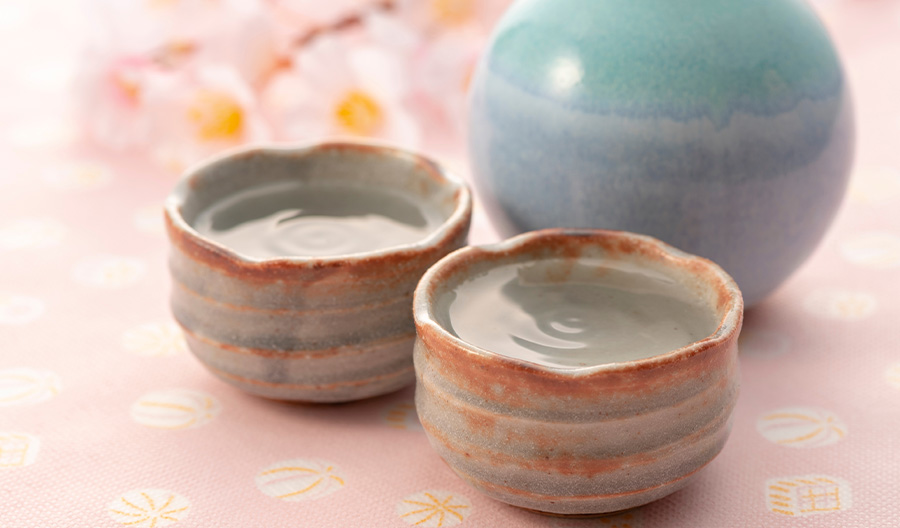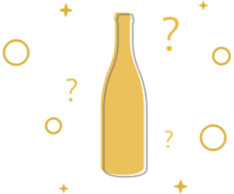With the rise of natural and low-intervention wines, producers are saying more by doing less. Many bypass a controversial step—filtration—as a way to create more expressive wines. But it’s not just winemakers who are turning away from squeaky-clean cuvées. Saké producers are also rethinking filtering. By doing so, some feel they’re not censoring the stories they want to tell.
Filtration in wine
Filtration can occur at different points during the winemaking process. It may be employed to further clarify wine after racking, the post-fermentation process where wine is separated from solids that have settled at the bottom of a tanks.
Another process, sterile filtration, may be used right before bottling to ensure the wine is free of bacteria or harmful yeast. Proponents say it ensures that the wine will be shelf-stable, but detractors say careful winemaking eliminates its need and that the process strips wine of its character, especially when performed after racking.
For Brad Hickey, owner/winemaker at a winery in McLaren Vale, Australia, unfiltered wines rarely gained favor with clientele during the early stages of his wine career.
As he worked as a sommelier at New York City’s Bouley in the early 2000s, he recalls a few “breakthrough wines, that were gaining popularity with drinkers.” But in general, wines needed to be pristine. Patrons even took issue with sediment and tartrates, two naturally occurring components that can appear in any wine.
Hickey says those experiences shaped him as a winemaker, and he sought to make “delicious wines with great stories. Wines that add something to the winemaking dialogue.”

“Those are the wines I used to buy, ones that could transport my guests somewhere else and that had a good backstory to amuse and educate,” he says.
Hickey counts his Nero d’Avola as the wine that set his trademark winemaking aesthetic. He planted the heat-happy Italian grape in McLaren Vale, then went to Sicily to research vinification techniques.
“Nobody [in McLaren Vale] that I knew had made wine in terracotta, so it was a new thing,” he says. “I decided to keep the wine on skins for six months, all of fall and winter, and to keep any sulfur to a bare minimum.” He now considers that sort of slow, thoughtful winemaking a hallmark of his style.
Not filtering the wines is also key to Hickey’s process. “For the most part, wine will naturally clarify over time,” he says, but he’s not adverse to a little cloudiness in the bottle.
A true unfiltered saké
Probably the most misunderstood unfiltered beverage is saké. Contrary to popular belief, cloudy nigori saké is filtered, as it can go through a coarse filter and retain some of the rice particles. But often, brewers press the liquid to separate it from the saké lees, and then reintroduce the solids. However, there’s a style of unfiltered saké called muroka that’s gained traction with brewers.
“Saké was secondary to food in Japanese culture until very recently,” says Monica Samuels, director of saké and spirits at Vine Connections. “The best thing you could say about saké is that it’s not going to interfere with food. Saké was meant to be innocuous: light, clean and water-white in color.”
Saké’s crystalline tone can be achieved with charcoal filtration, a process known as roka, but some brewers consider it cheating.
“If you’re making your saké with a lot of precision, it should come out of the tank looking really good without having to add charcoal to take out the color,” says Samuels. “Saké that is muroka often has a touch of color, generally in the lemon-to-gold range, and a rusticity that is richer than when charcoal is added.”
Although not a legally defined term, muroka is often listed on labels alongside words that denote more powerful and intense styles of saké, like yamahai or genshu.
“The more I asked consumers why they wanted to drink nigori, they said, ‘Well, it’s better for you, right?’” says Samuels. “They think it’s more natural and more like unfiltered wine, where nigori often has an extra step involved: press off the liquid and add the solids back in. So, if people are looking for something with less intervention, nigori sakés are not that, where muroka is.”

